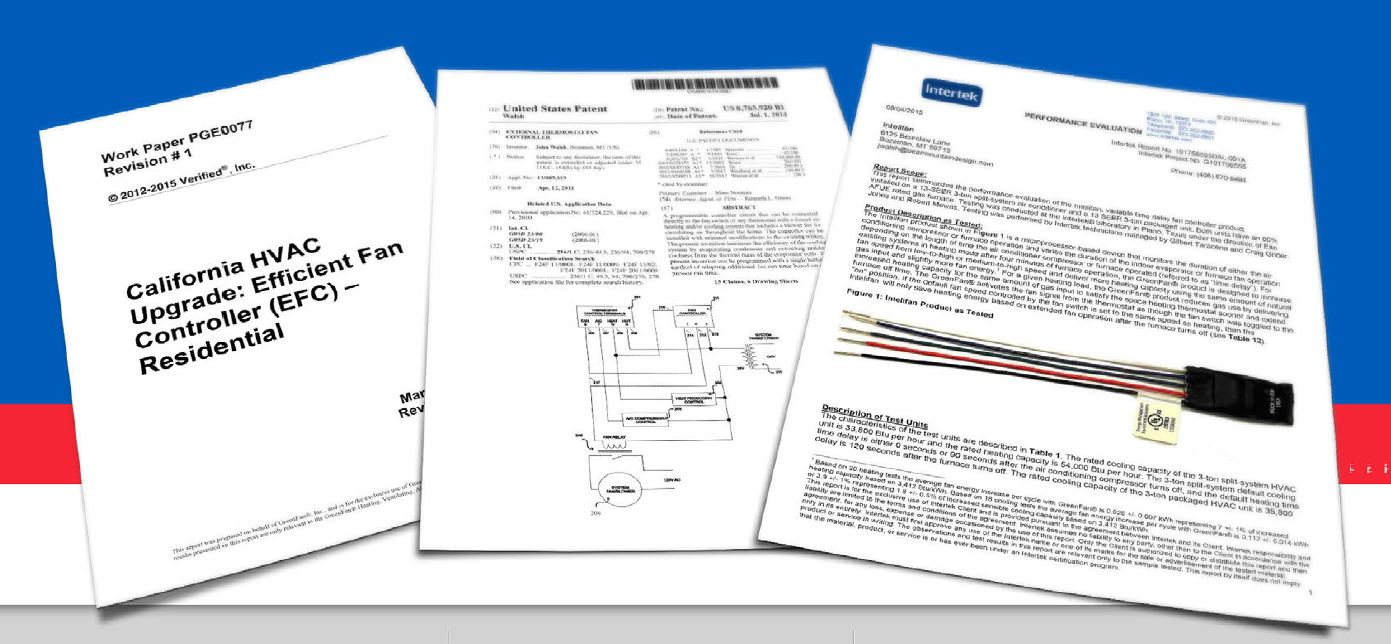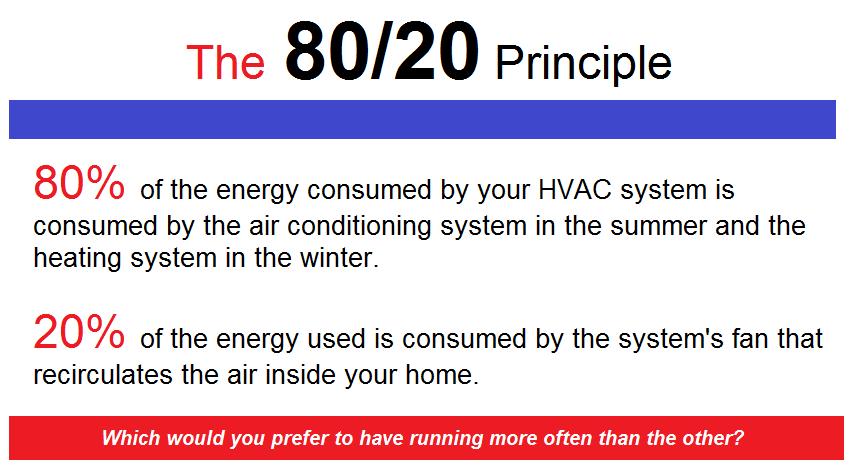Operation
 A typical HVAC system consists of a heating unit, an air conditioning unit and the ventilation fan or blower at the air handler unit. A thermostat is used to control the conditioning of the air in a desired space by sending control signals to the HVAC furnace or heater, the HVAC air conditioning and the HVAC blower or ventilation fan housed in a PCB located at the air handler unit. The HVAC fan controller typically operates the ventilation fan for 0 to 90 seconds after the furnace or air conditional compressor cycles off.
A typical HVAC system consists of a heating unit, an air conditioning unit and the ventilation fan or blower at the air handler unit. A thermostat is used to control the conditioning of the air in a desired space by sending control signals to the HVAC furnace or heater, the HVAC air conditioning and the HVAC blower or ventilation fan housed in a PCB located at the air handler unit. The HVAC fan controller typically operates the ventilation fan for 0 to 90 seconds after the furnace or air conditional compressor cycles off.
Studies show that even after this automatic 90 second extension, the furnace surface / air conditioner cooling coil still has latent energy left over. This wasted energy is not delivered to the desired space when the ventilation fan stops blowing. HVAC systems need a secondary controller (InteliFan Microprocessor) for recovery of remaining heating and/or cooling capacity and optimum HVAC equipment efficiency.
In systems where the air conditioning compressor runs continuously due to extreme outside temperatures, water will still condense onto the cooling coils. This water can be made to evaporate away and release additional latent cooling energy.
Intelligent
High-Performance
HVAC System Fan Control
The InteliFan Microprocessor adjusts the ventilation fan run time automatically, to maximize the capability of the system to its fullest extent. Made in the USA, UL certified and lntertek proven, this simply installed device requires no programming or maintenance, and will provide years of reliable and money-saving benefit. The Microprocessor recovers and delivers more heating and cooling energy to the conditioned space than is normally possible with just the basic factory HVAC system timers, or other simple fan controllers.

Inside the InteliFan is a microprocessor that intelligently allows your fan to run the optimum amount of time to extract the residual cooling or heating that would typically be wasted in your HVAC system ducts, cooling coil and heat exchanger. It utilizes stored information of real world run times and tells your system how long it should run the fan after the thermostat stops calling for heating or cooling to use the free energy to maintain the desired temperature.
A typical HVAC system consists of a heating unit, an air conditioning unit and the ventilation fan or blower at the air handler unit. A thermostat is used to control the conditioning of the air in a desired space by sending control signals to the HVAC furnace or heater. Once the thermostat reaches the desired temperature setting, the gas or electricity is turned off to the main components of the system. The HVAC fan controller typically operates the ventilation fan at a fixed setting from 0 to 90 seconds after the furnace or air conditional compressor cycles off.
Studies have shown that a fixed fan delay is extremely inaccurate and almost never runs the fan the correct amount of time. Considerable amounts of energy are still left on the heating or cooling system and the furnace surface or air conditioner cooling coil still has latent energy left over. This wasted energy is not delivered to the desired space when the ventilation fan stops blowing. An HVAC system needs a variable controller (InteliFan Microprocessor) for recovery of the remaining heating and/or cooling capacity and optimum HVAC equipment efficiency.

